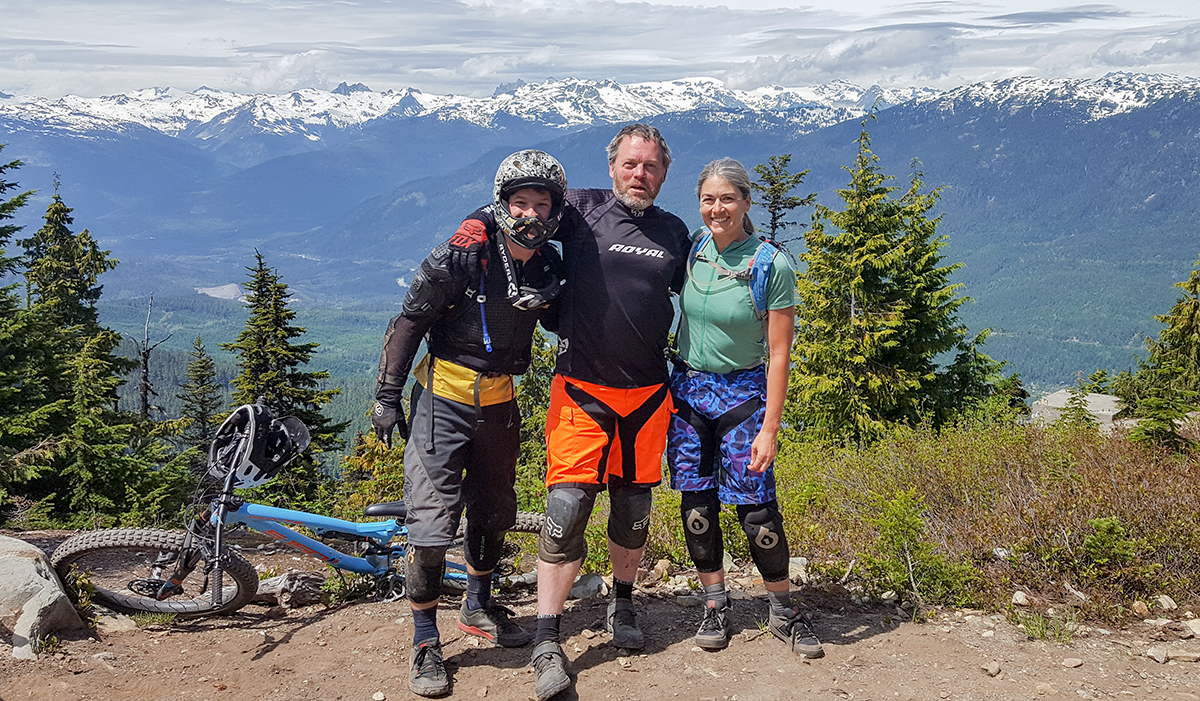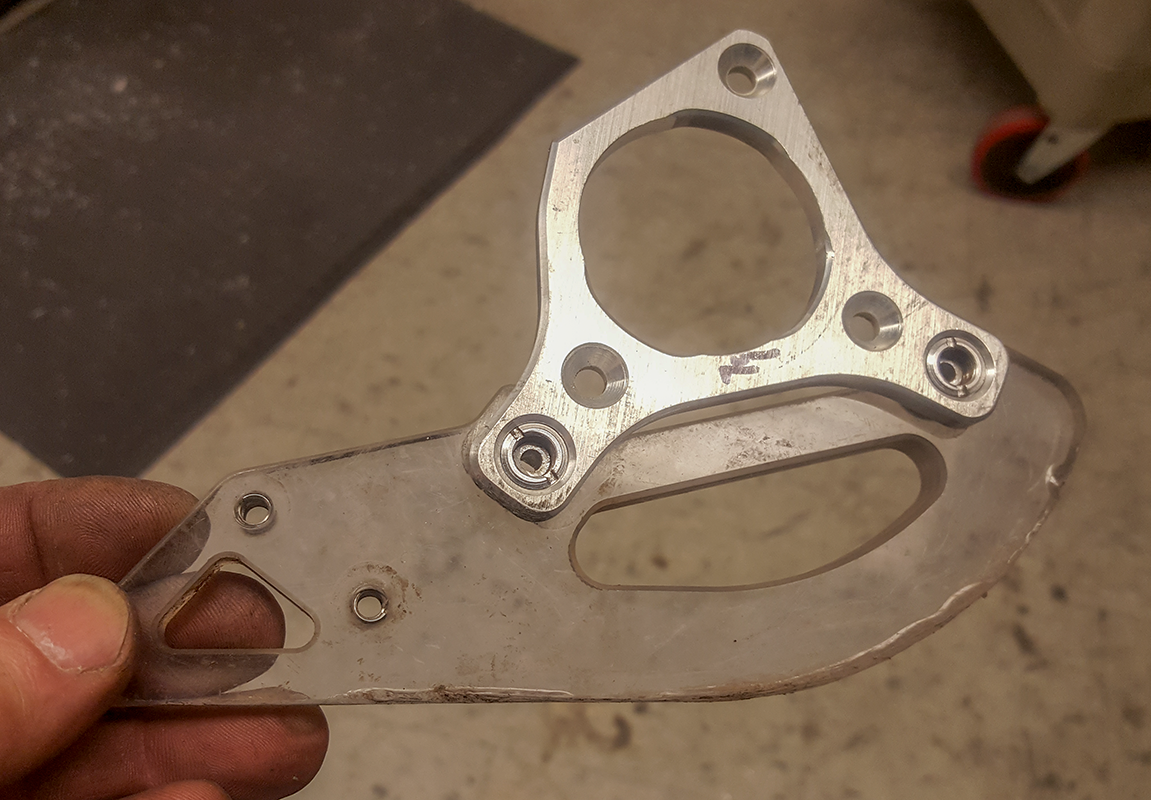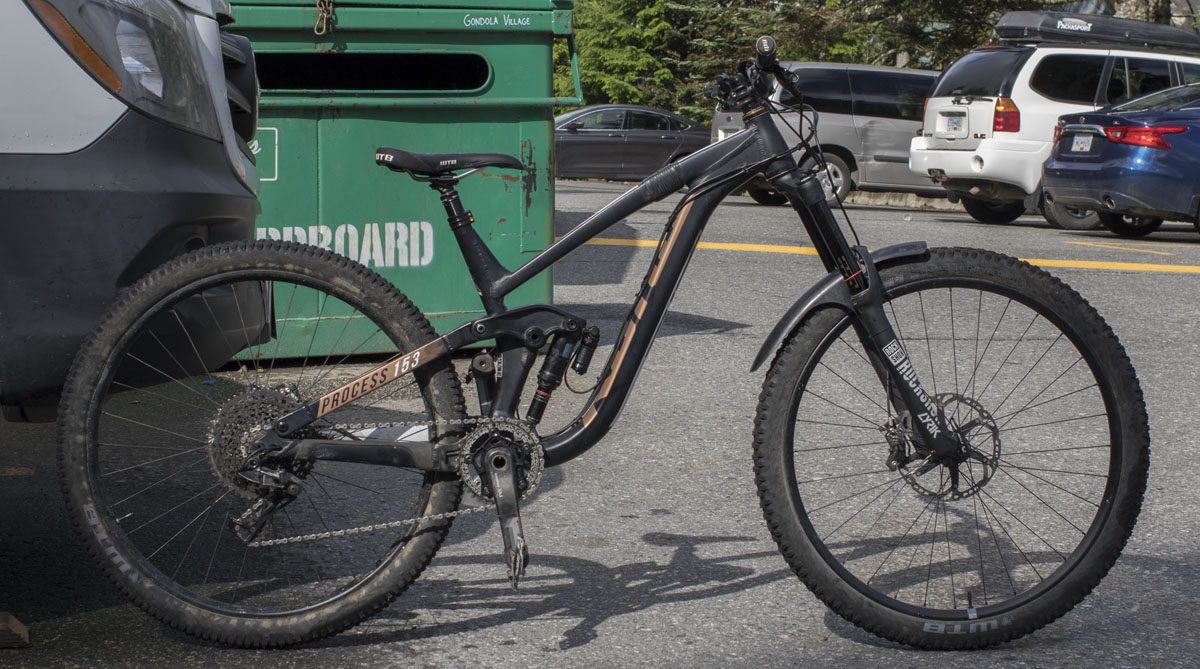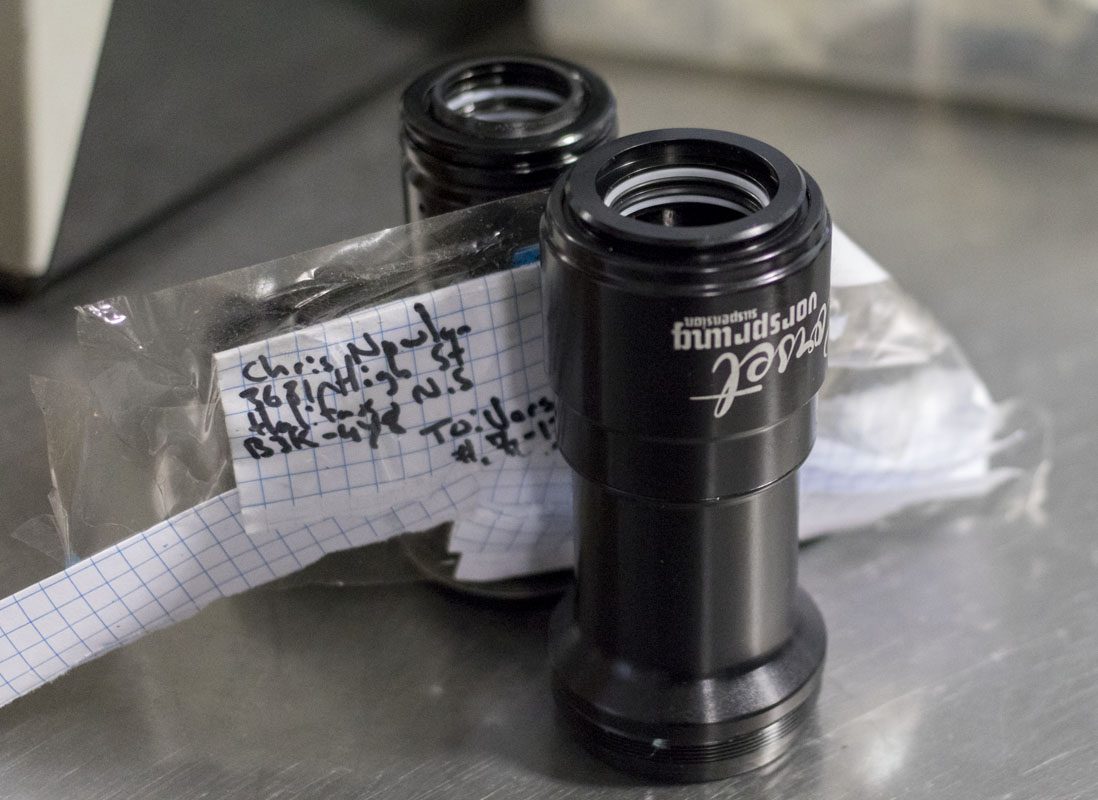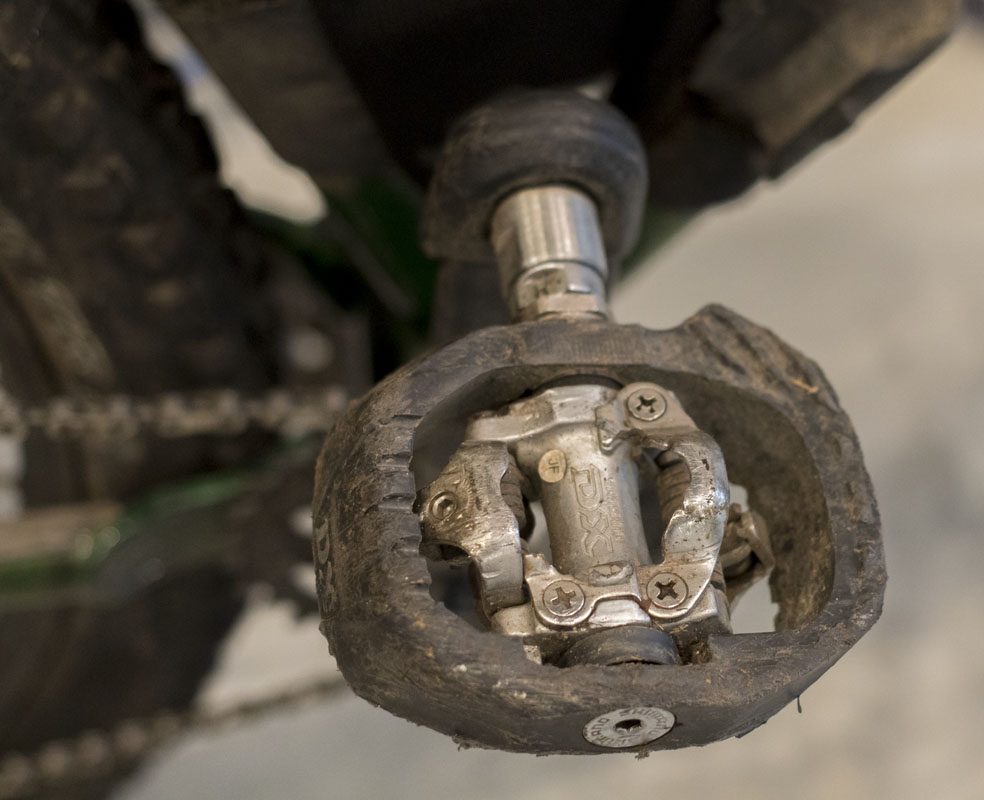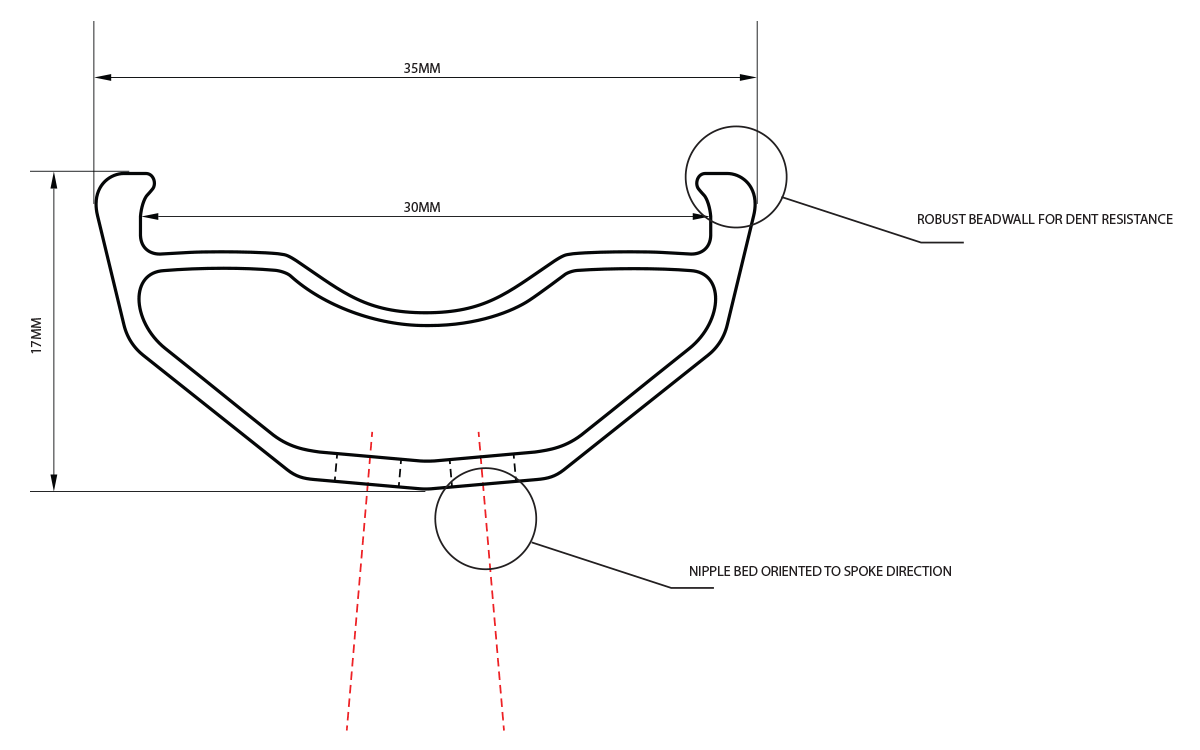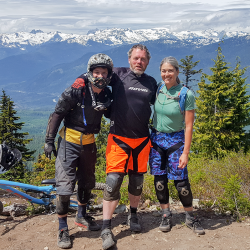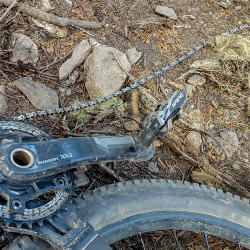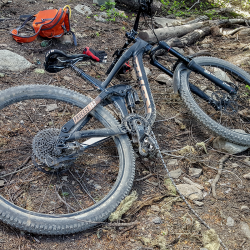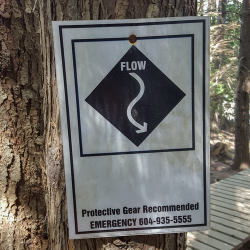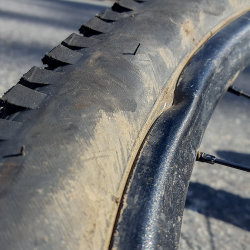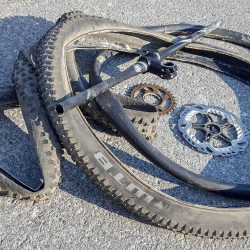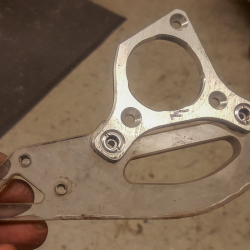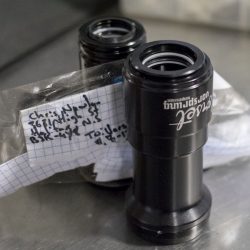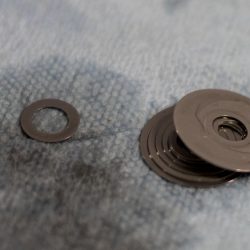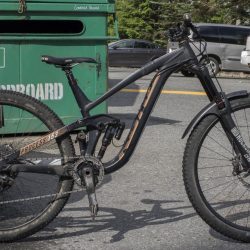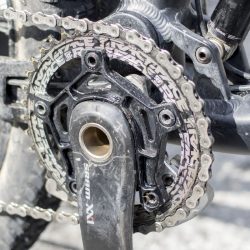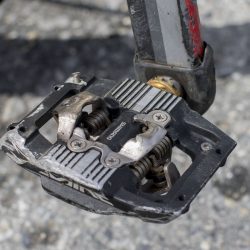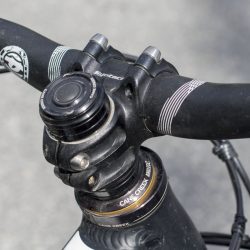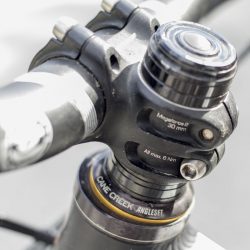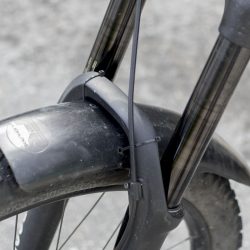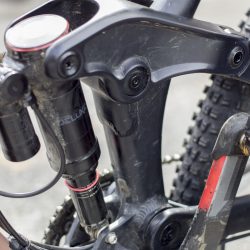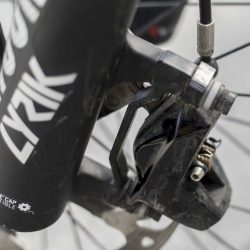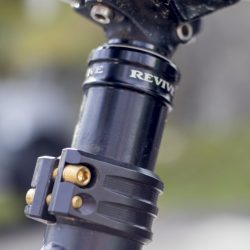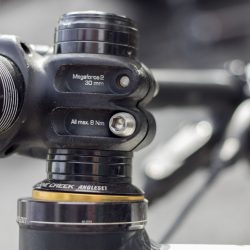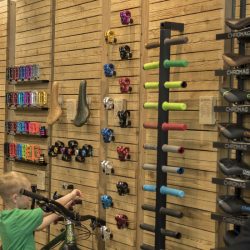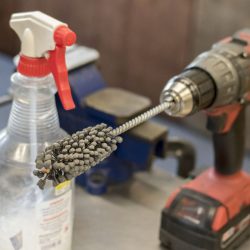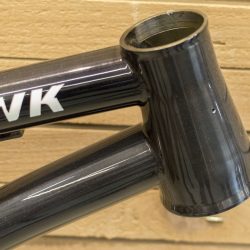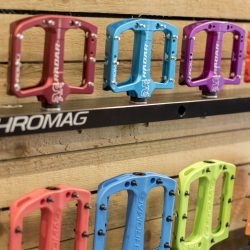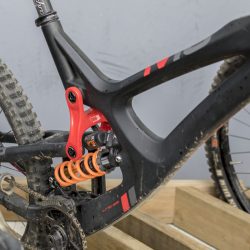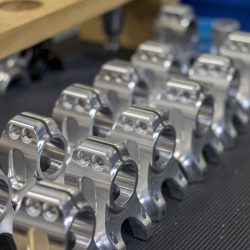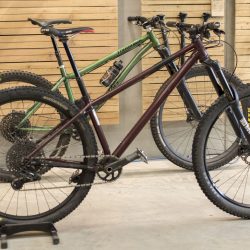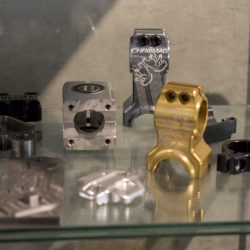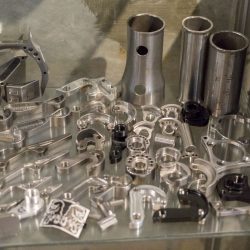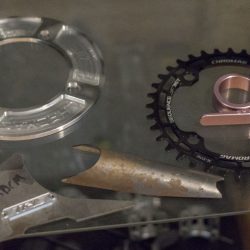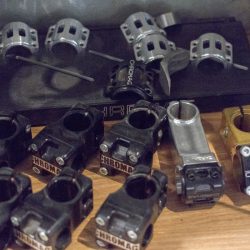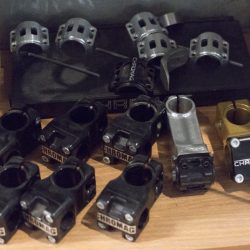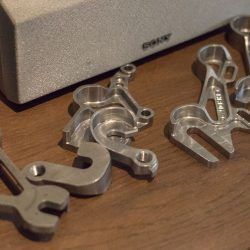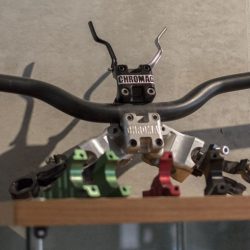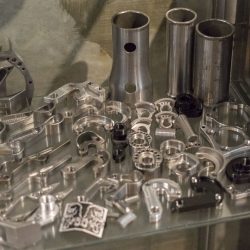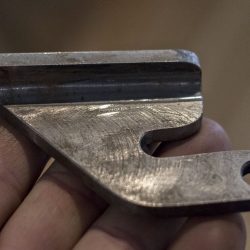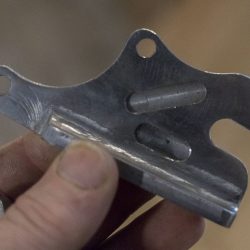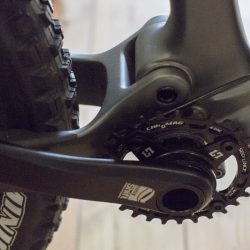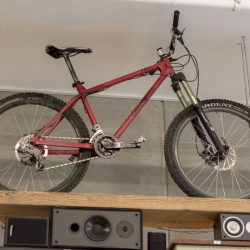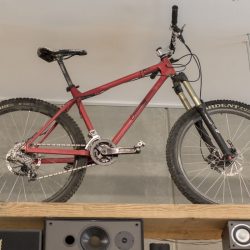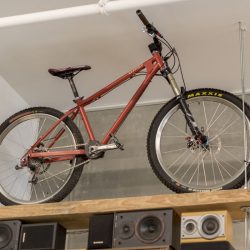Here’s the question:
Do you need a downhill bike?
In other words, have enduro bikes progressed to the point of usurping their larger brothers?
About fifteen years ago, if you were going to ride at a properly set up bike in a park like Whistler or Northstar, you’d have to be on a real downhill bike. A big, heavy monster with coil springs and a triple clamp fork. It would take the loads and the abuse. If you were going to go on a 30 mile XC ride you’d prefer a short travel FS bike or even a hardtail. These were light and efficient getting up the hills. That was where things were and that defined a lot of how we looked at bikes.
It was the dark ages.
Then came Super D, All-mountain, and Enduro racing and the bike game changed. It took a while but big bikes got lighter & small bikes got more capable. Somewhere after of all this the enduro bike became the bike choice of core mountain bikers. Going up. Going down. They do it all. Some are better than others. Most will be fun enough.
I’m on vacation in Whistler now and doing what I love to do, riding down hills on my bike. It’s my first time here since 2011 and my fourth trip. These days, I can’t justify keeping a real DH bike in my fleet as they don’t get that much use in normal years and I can only afford bikes that get used regularly. With my full suspension bike, I made sure that it was a modern enduro bike and was the real thing and capable of true DH use more than other options. Basically, a EWS pro boomer. I’ve had the bike since last fall and this was the bike’s first real test beyond the gnar trails I ride at home.
Years ago, I’d have called someone a fool if they were bringing anything other than a real DH bike to Whistler. Now is the time to test if this name-calling is still warranted.
The bike
Granted, this isn’t just an ‘enduro’ bike. It’s a DH bike disguised as an enduro bike. I’d probably call it a heavy EWS build. It’s a beefcake: big bearings, thick tubes, and meaty swingarms. It’s long and with the angleset and 180mm fork, nothing will stop it. Still, with the remote shock and good tires, it is fun enough for a long trail ride.
What did I swap out from the general trail setup for DH use?:
- Gearing, 38t chainring. Limited off 50t sprocket and adjusted derailleur for 11 speed shifting instead of 12.
- Tires, WTB Vigilante 29×2.3″ heavy/soft front, WTB Trail Boss 29×2.25″ heavy/hard rear
- Stem, Syntace MegaForce 2 30mm
- About 10mm spacer increase under stem
- Handlebar, Race Face Atlas 13mm rise, 785mm
- Front Rotor, 203mm Shimano XT Centerlock.
- Bash, PVD custom, cut down for modern bikes.
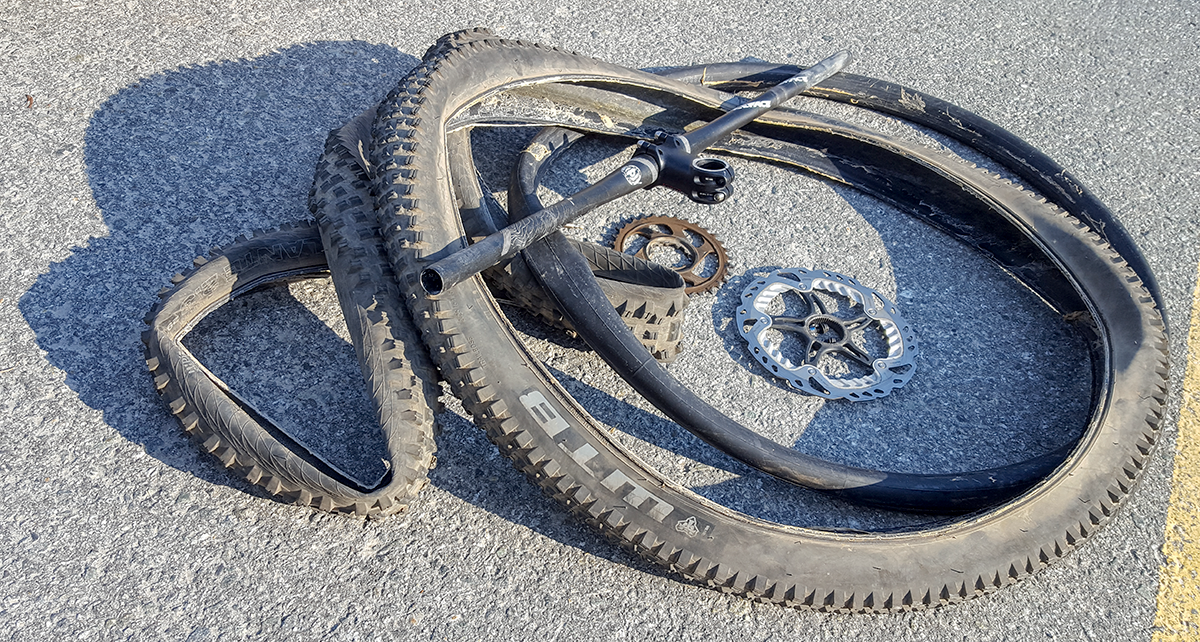
That’s it. Not another whole bike and the swapped parts are easy stuff to pack on a road trip. It was a porky trail bike. Now, it’s a light, fast DH bike.
In all honesty, I would have loved to put a 29″ Boxxer fork on this bike to feel the differences compared the 180mm Lyric 29er. I’m sure it would be nicer, but how much? I’m just not ready to buy a fork like that this year. The Lyric did feel good and it took everything I hucked at it without much complaint. Better comes at a cost. When is “good” enough?
I normally ride trail on a big bike like this with a 32t chainring and a 10-50 12-spd cassette. Changing the cassette to a smaller xDr for DH is a bit impractical, an issue for another trip. I initially changed chainring to a 36t but immediately found I needed more. I changed to the 38t and cut off access to the 50t sprocket so I didn’t need to replace the chain. The gear wasn’t needed and this would create increased chain tension. That was sooo much better but I would have gone up to a 40t if I had it on hand. Especially with these 10-50 cassettes, it’s important to get away from riding the 10t all day and use the range of the cassette a bit. More tension and retention, more speed, more boom!
I would have preferred using a Race Face Atlas 32mm rise bar instead of the 13mm. This would have made the bike look a bit cleaner with less spacer under the stem. I didn’t have a spare to pack so I just went with what I had. This wish is pure vanity.
The front tire probably should have been a 29×2.5″ tire. Something like the Maxxis Minion DHF 63-622. That would have been welcome at times. The limited space on the rear of the Kona is a shame.
Bash devices are quite out of vogue these days. Often, people will ride a small retention at best. Why? Flow trail. The mountain is riddled with them now. Rock and root are super uncool these days. Not for me. We old guys still like the chunk and for us, there are bash devices.
I had re-valved and adjusted the volume spacers in my rear shock when getting ready for this trip. The shock was under damped even for trail so there was no way that I’d be happy with it for a week in Whistler. I expected to see a bit of return from the increase in compression damping. The rear may be a little less plush at full extension than I’d like and I’m planning on doing some more work with the valving when I get home to fix that. Looking back, I could probably have used all three volume spacers in the rear shock rather than two. Since my suspension is generally set up for trail riding, I figured that I would need to add a volume spacer to the front and rear while riding park. It was a close call on adding the spacer. In retrospect, I probably should have added it but it wasn’t a critical need. I guess that the hardest of hits on trail are more similar to those in park these days. Anyway, my suspension felt wonderful, front and rear.
The 185mm Revive post was solid and trouble-free. With the long travel bikes in the steep mountain gnar, a good argument could be made for a 200mm stroke model. Getting on and off the bike in dank chunk could have been a tad easier with that. In normal riding, the 185mm is plenty.
Another big question was; how about the geometry of the bike? I can say it’s pretty much spot on as I have the bike set up. A bike with more progressive trail geometry may start becoming a bigger handful as I have to keep focus on standing on my pedals and not falling onto my arms in the real rough sections here. It’s fine, but just about at the edge.
It was challenging picking a DH bike to compare geometries, but I decided on the Commencal Supreme DH 29. We don’t see many of these in the US, but here at Whistler a few show up due to the international attendance. I wanted something that reflected modern trends. A prime example on a large size with a similar reach is the 844 front center compared to the 835 on my bike. Just a 9mm difference. The 439mm chainstays of the Supreme is 14mm longer than the 425mm stays on my bike. A significant difference for riders that are average to shorter. Granted, the Supreme has 20mm more (200mm) fork travel and 52mm more (205mm) rear wheel travel than my bike. The front travel likely gives a little more plush feel. The rear, I’m not so convinced about. In very technical descending on the 29 inch wheels, my ass drags the rear wheel constantly. It’s not that bad when wearing Cordura shorts but in Lycra it can bite. I figure 155mm is about the max a 29er can do in the back. It may be that the increased travel (along with the highly progressive linkage) don’t have the result I’d expect so I would like to give it a try.
Riding the bike
I’m not a pro rider but I can ride at pace on most double black diamond trails in the Whistler Bike Park. I’m not a terrific jumper but I make up for that in the rocks and roots. Overall, I’m probably a better-than-average expert rider until the real free-riding starts. At 48 years old, that means something. I got the chance to ride Original Sin, Goat’s Gully, and In Deep with some fast folks from Marin that were up here riding at the same time. They were a group of 10 legit riders, all on DH bikes, riding real trail, 6 days in. I fed into the group, riding at pace, riding what they were and taking similar lines. It didn’t seem to matter that I wasn’t on a proper DH bike. This was a pretty good test of the bike and what it could do in the rough, among similar riders, on bigger bikes.
Nothing about this bike was slowing me down. In fact, I was probably faster on it than I would be on a DH bike. It was far lighter and more maneuverable overall. I smashed it. I bashed it. It hugged the ground and stuck over everything. One memorable moment on day two was going off the larger drop on Schlayer a little fast and off to the left, where it’s bigger. I shot pretty far and down. The bike landed, and rolled away solid. I was in awe. In Goat’s Gully, the last slab section rolls out smoother than I can rememberduring the 26″ DH bike days of yore.
A couple things that make this nice in parts of the park are being able to raise the saddle and use a real range of gears. This is pretty cool for getting up the rock wall on Original Sin and pedaling out the flat section of Golden Triangle and speeding down Bear Cub and Crossroads.
The weakest link of the bike? The rear rim. This mountain eats rims. It got folded over and beat…over and over. I had to do a lot of nipple spinning to hold the wheel together during the five days of riding. The WTB Frequency i29 is certainly not up for this level of DH riding (or my sloppiness). This is the real thing and a rim that is able to handle large drops into big sharp rocks over and over is in order. I spoke with Jordan Smoke at WTB about how this rim had failed and he suggested trying a WTB ASYM i29. He had moved over to this rim and says that he’s no longer having issue. But this was a worry solved later.

In the end, I don’t think the bike held me back. It may have been a bit more work to manage and was more exhausting in the rougher washboards and berms. I believe that quite a bit of the flex and vibration that was going on translated into the grips mainly due to the single crown fork. Some of that from the frame side. On bigger hits on rocky trail with a little side load, the difference could be felt. I was pinging rim so the tires were getting pushed hard. The rear rim would have gotten mashed regardless of the chassis. On the plus side, the bike’s light weight made it really easy to move and flick around. Less work hoisting the bike around meant more muscle left for those last runs of the day.
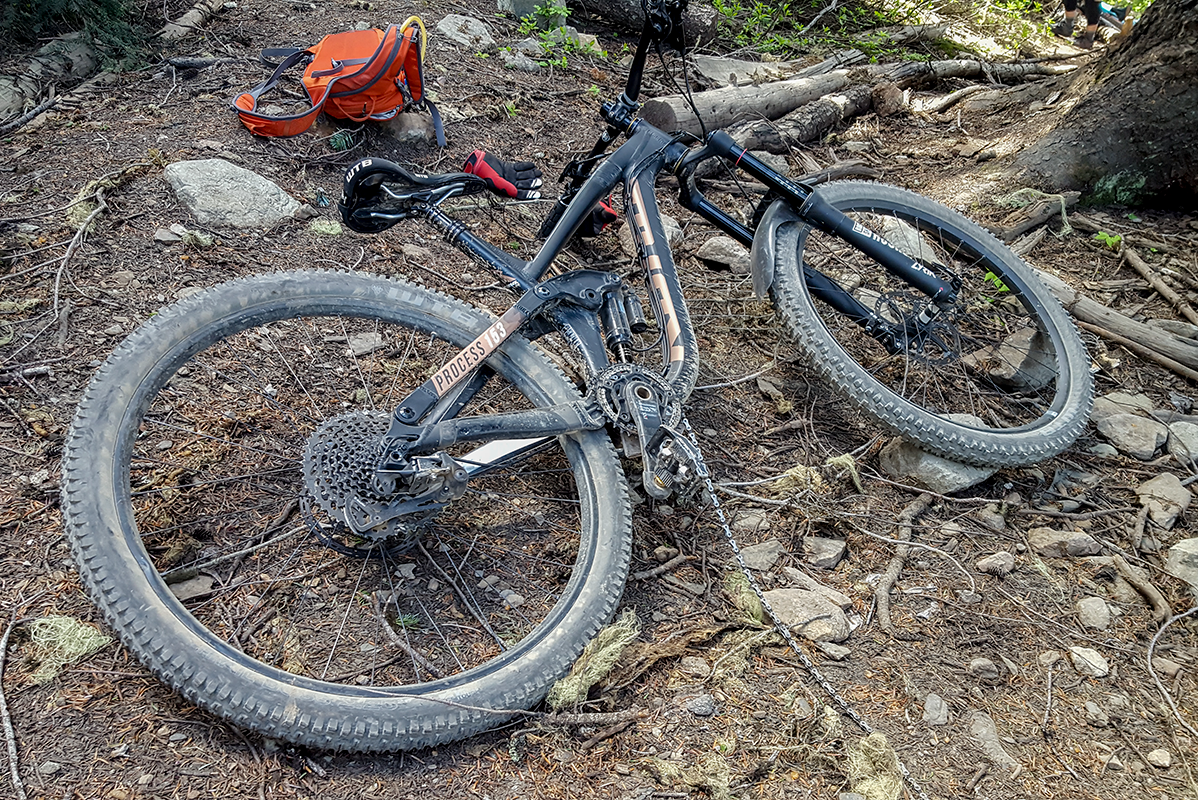
Back to back rides would really have proven this all out. At $100 for rental, should I have? Probably. Still. The bike wasn’t a limitation and I survived. I’m thinking that for folks that don’t live right at a bike park, the big enduro bike is really the bike to invest in. Have that and a good hardtail to cover everything. It will get used much more and come in handy for many rides. Big enduro wins.
Vorsprung and Chromag
While in Whistler, I was able to visit Steve Mathews at Vorsprung Suspension and Ian Ritz at Chromag Bikes. Both of these guys were great hosts and spent quite a bit of time with me, talking shop and our respective worlds. Their world is Whistler B.C. and fast pro riders and my world is Norcal.
With Steve, we discussed my recent damping modification to the RS Super Deluxe and his cool fixes for the Fox X2. He and the guys in the shop were great and it was nice to see the rapport in their cozy workspace. I wish that I could have gone through all the goodies in his storage drawers. Steve is definitely on to some real world fixes for folks as his proving ground and riders are pushing to the limits.
Over at Chromag, Ian and I spoke for close to five hours. Seriously. We have had online discussions and noted each other’s work over the past 12 or so years. We finally had a chance to meet face to face AND with something better: both of our 180mm hardtails in the same room. His Tomohawk and my Blackbird. The Tomohawk is much more a PNW (Pacific Northwest) bike than the Blackbird (NorCal), reflections of where we ride and the terrain we design for. The similarities and differences are defined by region and are the devil’s details. He’s got a far steeper seat position than mine, because his riding is either straight up or down hills. Blackbird is slacker in the seat; NorCal rides have large transits and flatter sections to ride. Both are better than the mass market crap we see from the large companies and are tuned to where the bikes will actually go rather than trying to make the whole world happy. Brothers in bikes.
Way back in the day, looking for a custom mountain bike framebuilder, the rule of thumb was to always use a local builder as they knew where the bike would be used, who you were, if you knew how to ride, etc. This concept largely went extinct until recently. Many local framebuilder have become followers rather than leaders. Generally craftspeople rather than actual designers. The good news is that some blossoms of expertise are coming up and we may see a whole different ecosystem in the next few years. The king is dead, long live the king!
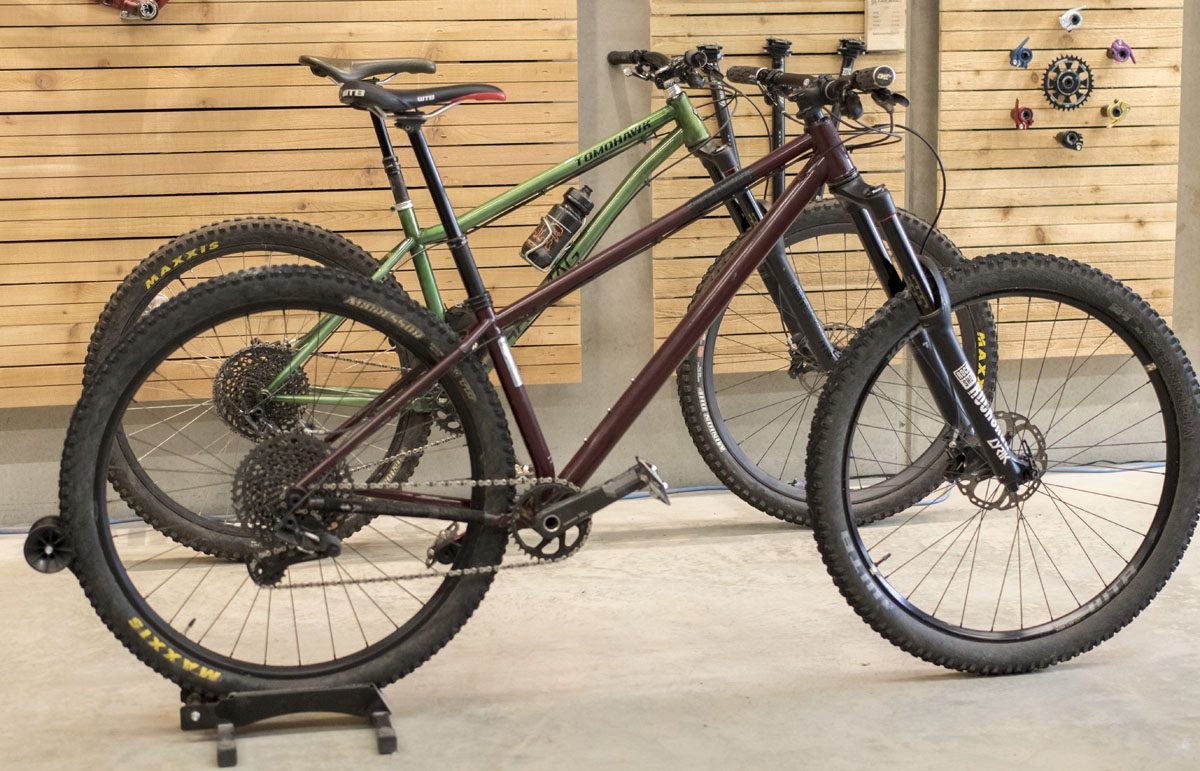
It was a very cool meeting of the minds as we have both been trying to progress the lowly steel hardtail through the years…he in a commercially successful way. A big portion of Ian’s business is parts. Going through his place there was much going on and many interesting projects moving along.
Chromag has been doing novel work lately with pedals. They came out with a great looking grom pedal and are about to release (or have?) a wide and long platform pedal and are working with some famous names. Different shapes are showing up in what they do. Interestingly, they are into the wide q-factor thing. Seriously wide. I wonder if it’s a British Columbia thing or a shredder thing. I pedal far too much to consider that.
I obtained a pair of the Chromag rims to repair my broken wheels: a Chromag BA30/Phase30 combo for the rear and front of the Kona. They look pretty killer. Lots of cool details. The two that really drew me in were the nipple seat facets to reduce bending load on the nipple at the rim and the wide bead flange area to minimize damage to tires from bottoming. They look cool and are even 1mm wider than what I have on the bike now!!! Cray.
